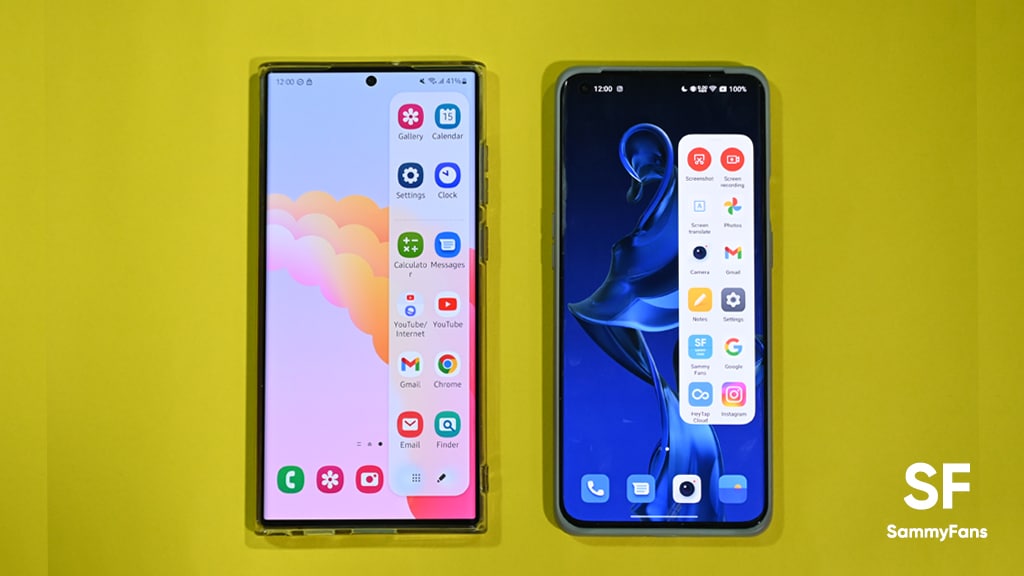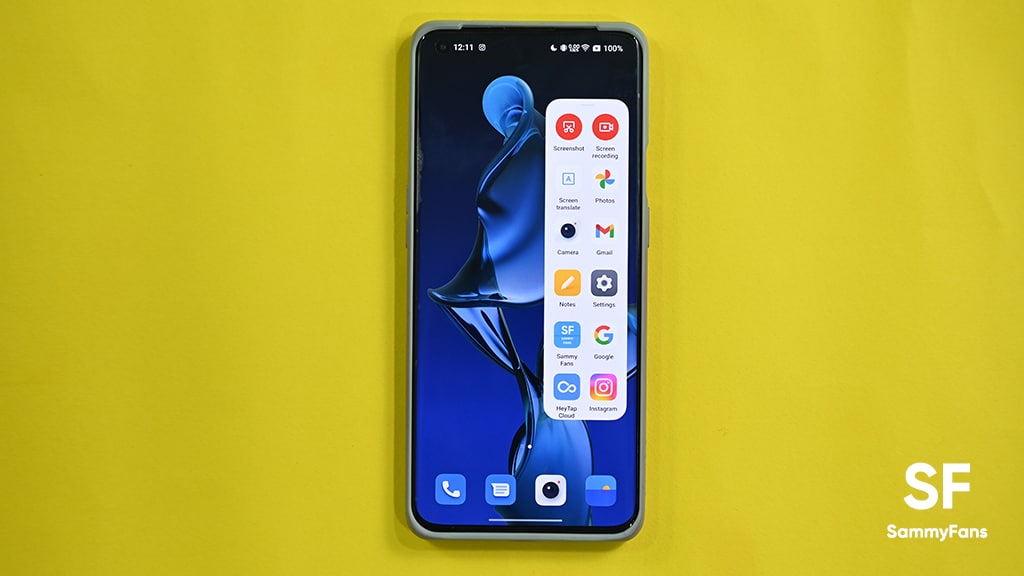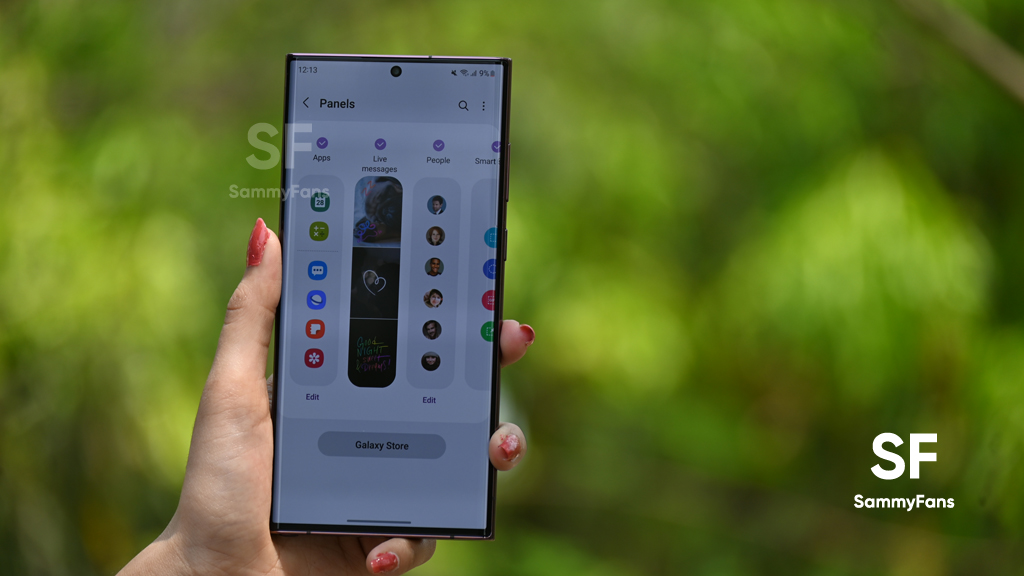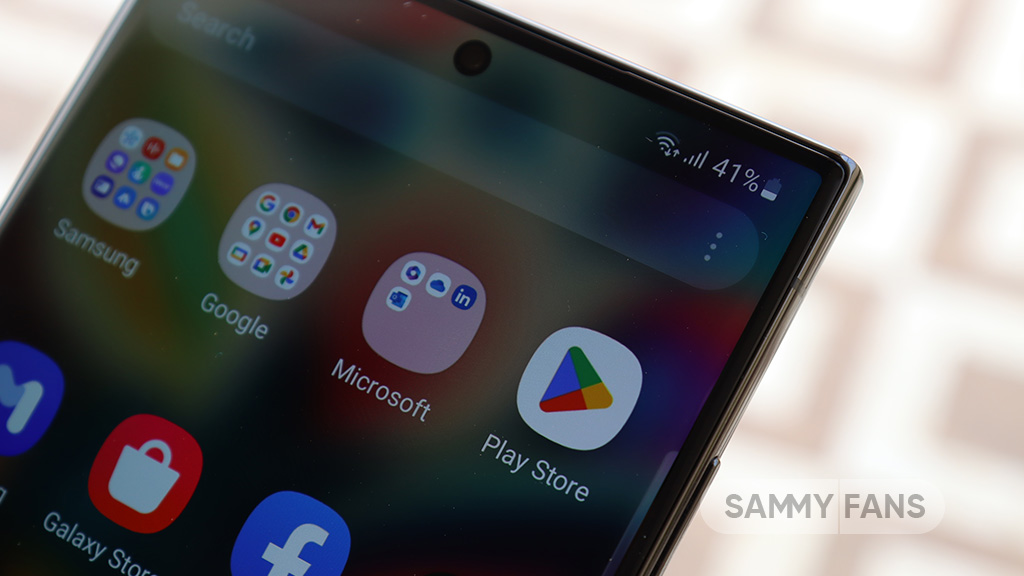Samsung
Edge Panels vs OnePlus Smart Sidebar: Samsung is way too SMART!

Samsung Galaxy phones carry an interesting feature called Edge Panels that lets you access various features of One UI. Edge Panels is a quite common feature among Samsung customers, while, there’s a funny variant in OnePlus devices called Smart Sidebar.
OxygenOS’s Smart Sidebar is not really smart as the advanced variant is exclusively available in One UI, and Samsung calls it Edge Panel. Similar to Samsung, OnePlus let users add a handle in the display edge to expand the Smart Sidebar.
Join Sammy Fans on Telegram

Swiping the handle right opens the stripped-down variant of Samsung Edge Panels with a handful of functions and manually added apps. The maximum expansion layout of the OnePlus’ Sidebar is 6 × 2, and users can access the remaining apps by scrolling down.
Follow Sammy Fans on Google News
Talking about responsiveness, it adopts both light and dark modes as per the phone’s settings, however, the handle allows users to adjust the position throughout the edge. The look and feel of this feature are basic with solid background color and it has a button letting you customize the apps and buttons.

On contrary, Samsung lets you quickly access your favorite apps, features, and contacts from Edge panels. Unlike the limited possibilities of the OnePlus Sidebar, Samsung’s Edge Panels feature offers users add up to 10 panels that can be accessed through pagination functionality.
The panels include Tasks, Tools, Edge People, Apps, Smart select, People, Live messages, Weather, Reminder, Clipboard, System Monitor, Calendar and Direct Call. All of these panels have additional features and tools that take the user’s experience to a whole new level.

The design of Edge Panels is pretty awesome with a layout of 6 × 2, similar to the OnePlus Smart Sidebar. Instead of solid colors, the Edge Panels feature has a transparent feel that makes icons and text clearly visible. You can also access more added apps by scrolling down from the Apps Edge panel.
Not that all! There’s a lot to explore about Samsung Edge Panels.
One UI Watch
One UI 6 Watch Beta 4 rolling out to Galaxy Watch 6, Watch 5, and Watch 4 series

Samsung has announced the One UI 6 Watch Beta 4 update for Wear OS smartwatches. This update is available for the Galaxy Watch 6, Galaxy Watch 5, and Galaxy Watch 4 series. It includes several improvements based on user feedback to make your watch perform better and more reliably.
One UI 6 Watch Beta 4 update brings new support and several enhancements. It improves the overall system stability and performance for smoother watch operations. Also, battery life has also been improved, so you can expect to get more use between charges.
Moreover, the performance of applications has been optimized for faster and more reliable operation. It also addresses network connectivity issues to make it easier for your watch to stay connected.
Furthermore, the update introduces Global Always-On Display (AOD) support to provide important information even when the screen is off.
The fourth beta update also contains a minor issue with the ‘Show last app’ setting. The default value has changed, which might affect users who previously set it to the ‘Not used’ or ‘Within 5 seconds’ option. If you notice that your setting isn’t being applied correctly, simply go to the Settings menu and select your preferred option to fix the problem.
Users of Galaxy Watch 6 series can verify the latest beta update through version ending with ZXG6, while Galaxy Watch 4 and Galaxy Watch 5 users are getting it with version ZXG7.
To install the update on your Galaxy Watch, go to Galaxy Wearable on your smartphone, then navigate to Galaxy Watch >> Watch settings >> Watch software update >> Download and install. This will allow you to install the latest beta version. Before updating, make sure to back up any important data on your watch.

Samsung
Samsung Galaxy Tab S9 series grabbing July 2024 update in Canada

Samsung Galaxy Tab S9, Galaxy Tab S9 Plus, and Galaxy Tab S9 Ultra users are getting a July 2024 security update in Canada. This update is already rolled out for users in Europe and the company will soon make it available in more countries.
The company is dispatching the latest software update with system security improvements to keep your files and data safe on your phone. It also optimizes system stability to offer you uninterrupted and seamless functionality on your device.
July 2024 update fixes over 55 issues including 4 critical and 21 high-level vulnerabilities in Android, contributing 33 SVEs related to components like One UI Home, System UI, Secure Folder, and more, further enhancing device security.
Users of the Samsung Galaxy Tab S9, Galaxy Tab S9 Plus, and Galaxy Tab S9 Ultra in Canada can verify the July 2024 security update through the One UI build version ending with BXCG. The installation package size of this update is around 358.38MB.
You can check the update by navigating to the device’s Settings, then a Software update, and Download and Install. If you have received the update, install it now to get enhanced features.
Samsung Galaxy Tab S9 users will soon get One UI 6.1.1 update with a bunch of new features. Some of the highlighted features are Sketch to Image, AI Portrait Studio, Auto Zoom, enhanced Note Assist, Instant Full-screen translation, conversation mode for dual screen, Suggested replies, Photo Ambient, and more.
One UI 7 could bring new battery indicator to Samsung Galaxy
Good Lock
Samsung will resolve Home Up Finder issue with upcoming software update

Samsung has confirmed that it will fix an issue with the Home Up Finder feature through a new software update. Some Galaxy users have been facing an issue where the Finder’s layout does not appear correctly on their screens.
According to the information, the Finder sometimes overlaps with the battery, network, sound, and clock icons at the top of the screen. This overlap can hide the search field or make it difficult to use.
Users have reported that this issue makes it hard to search for apps or use the Finder effectively. Samsung has recognized this issue and is working on a solution. The community moderator has announced that the company will release a software update to fix the layout of the Finder feature of the Home Up.

Moreover, Samsung has also apologized for the inconvenience the Home Up Finder issue may have caused and ensures users that the company will fix it. Users should keep their devices updated by checking for new software updates regularly.
Previously, the company added the long-awaited ‘Access Finder’ feature that makes it easier for users to find and open apps quickly. In addition, users now have a new ‘App Icon Setting’ for the customization of app icons.
Several Galaxy users are facing the issue after using the Finder feature of the Home Up Good Lock module. Fortunately, the company has confirmed to solve it with the upcoming software update.
However, Samsung has not provided a specific timeline for when this issue will be resolved. Users will need to wait for future software updates and official announcements from Samsung regarding the Finder bug.














